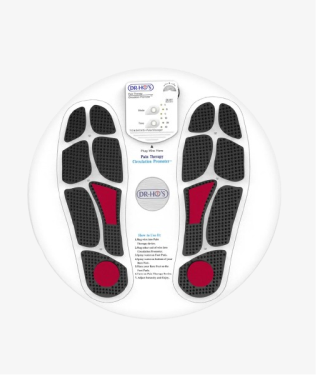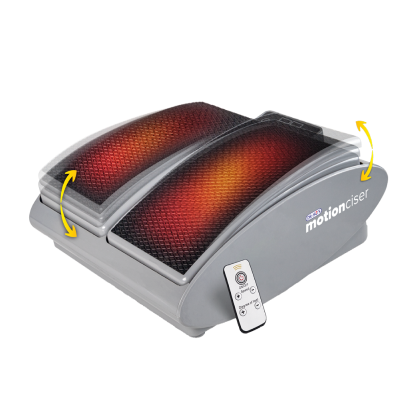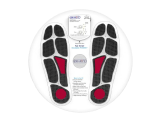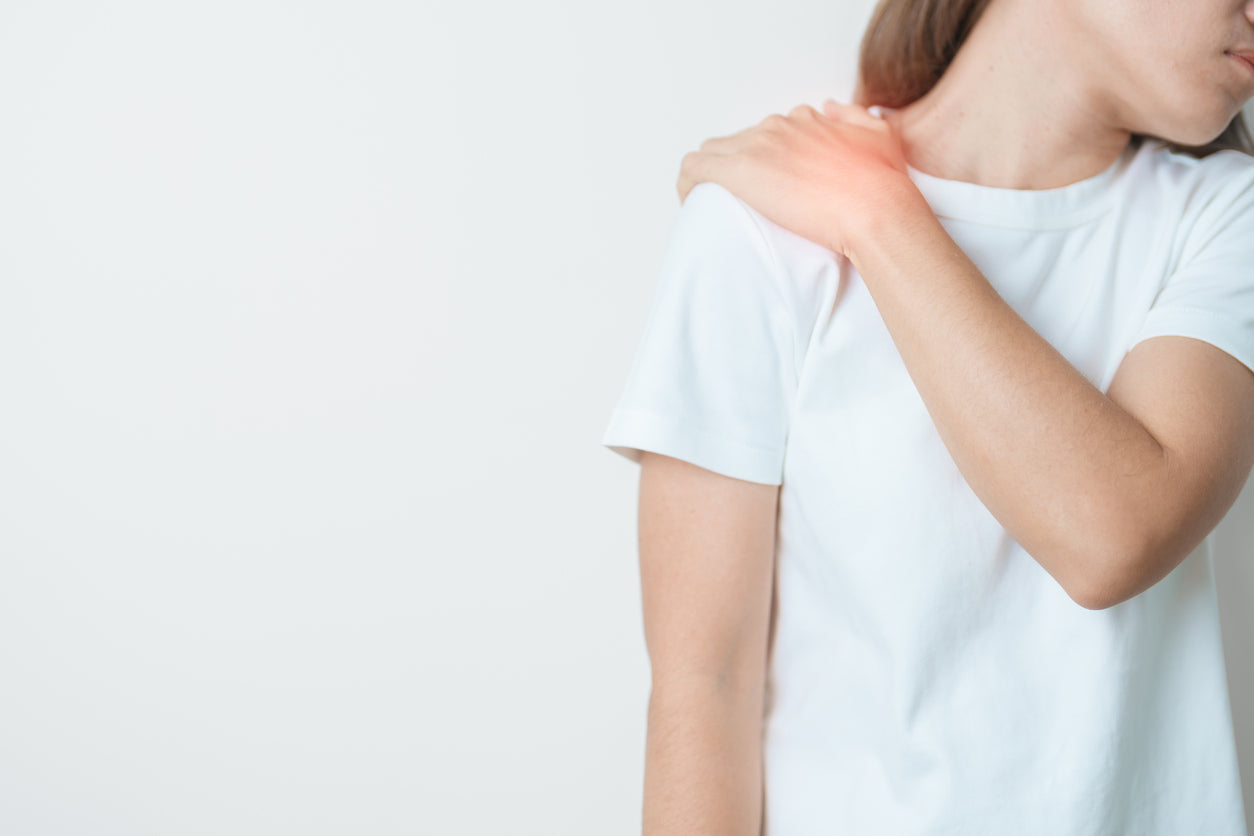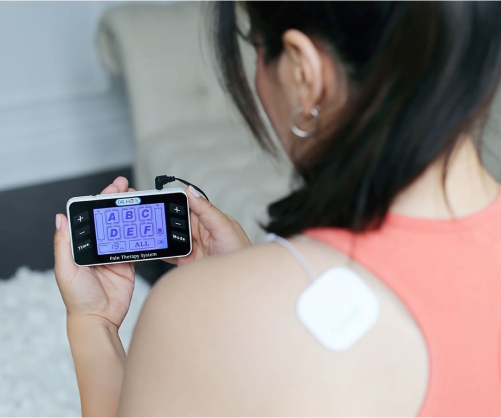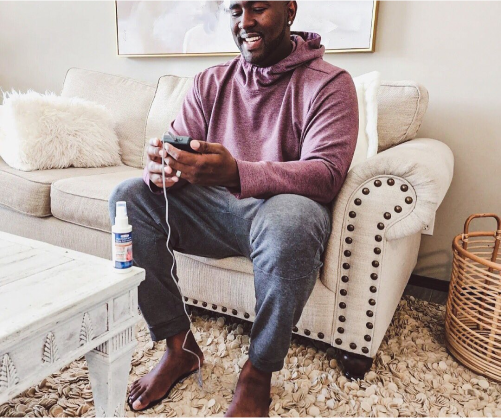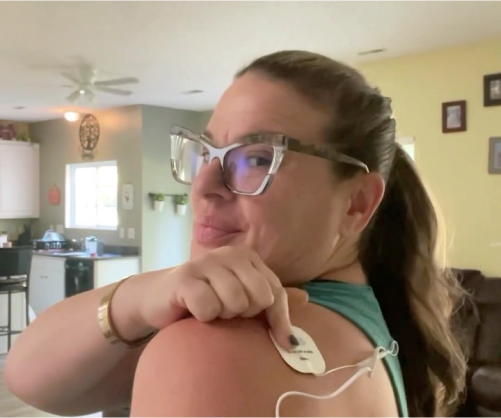When you’re dealing with hip pain, getting a good night's sleep can be a challenge. And when you don’t get quality sleep, your pain can feel even worse. It’s common for pain sufferers to find themselves in a cycle where they struggle to fall asleep at night due to their discomfort, only to find that their pain is worsened by a lack of quality sleep. Taking steps to address your sleep routine is important in breaking this cycle and achieving a good night's sleep, which can help you feel more like yourself again. Keep reading to explore ways you can assess yourself with a 5-point checklist that can help you with hip pain when sleeping on your side!
Introduction to Hip Pain
Hip pain is a widespread concern that can disrupt daily life and make even simple movements uncomfortable. The hip joint is one of the largest and most important joints in the body, connecting the thigh bone to the pelvis and supporting much of your body’s weight. Because the hip is made up of bones, cartilage, and soft tissues like muscles and tendons, it’s vulnerable to a variety of injuries and conditions. Whether you’re experiencing a sudden sharp pain or a lingering ache, hip pain can limit your mobility and affect your ability to get a good night’s sleep. Understanding the different aspects of hip pain, including its causes and symptoms, is the first step toward finding effective ways to relieve pain and restore your quality of life.
Causes of Hip Pain
There are many potential causes of hip pain, and identifying the underlying issue is key to effective treatment. Some of the most common causes of hip pain include hip bursitis, hip arthritis, hip tendonitis, and sciatic piriformis syndrome. Hip bursitis occurs when the fluid-filled sacs that cushion the hip joint become inflamed, leading to pain and stiffness around the hip. Hip arthritis, such as osteoarthritis or rheumatoid arthritis, results from the gradual breakdown of cartilage in the hip joint, causing the bones to rub together and produce pain. Hip tendonitis is another frequent culprit, involving inflammation of the tendons that connect muscles to the hip bone. Additionally, sciatic piriformis syndrome can cause pain that radiates from the hip down the leg when the sciatic nerve is compressed or irritated. Each of these conditions can contribute to hip pain at night, making it difficult to fall asleep or stay comfortable in bed.
Here are some ways to manage hip pain:
1. Sleep in an ergonomic position
An important first step in addressing hip pain when sleeping is assessing your sleep habits—particularly your sleeping position. Your sleep position can significantly impact hip pain, as improper alignment may increase discomfort. Maintaining proper alignment and keeping your hips aligned during sleep is crucial for reducing pain. Adjusting your sleep position, especially if you are a side sleeper, can help keep your hips aligned and reduce discomfort.
It goes without saying that if your hip pain worsens when you sleep on your side, you should probably try to avoid it. For most pain sufferers, sleeping on your back with your spine ergonomically aligned (at 180-degrees) is ideal. However, adjusting this without assistance can be challenging. For side sleepers looking to sleep on their back more, try the following to prevent rolling over:
-
Put a large pillow or another blockage by each of your sides
-
Sleep with something round such as a ball in your pocket to make it more difficult to roll over
Using knee pillows or a pregnancy pillow can also help keep your hips aligned and relieve pressure, especially for side sleepers who may find it difficult to maintain optimal sleeping positions.
You can also try the DR-HO’S Just Right Pillow which promotes better sleep posture and is made for both side sleepers and back sleepers. With customizable firmness and support, you can drift off into the deep sleep you need to rest and recharge.
2. Ensure your mattress is supportive
Sleeping on the right mattress can make it that much easier to improve your sleep hygiene. For most pain sufferers, a mattress with medium firmness is ideal. While a firmer mattress can help support the back, it can also make it difficult to get comfortable. Conversely, a soft mattress may be comfortable but it may not offer adequate spinal support. A healthy compromise is a medium-firm mattress that gives your spine the support it needs without hurting your hip area if you sleep on your side. Choosing the right mattress can help avoid hip pain by providing proper support and alignment, which is an important prevention strategy for minimizing discomfort at night.
3. Talk to your doctor about hip pain conditions
For some, managing hip pain when sleeping on your side is as simple as adjusting your habits or getting a more appropriate mattress. For others, hip pain is a symptom of an underlying condition. Consult your preferred healthcare professional for diagnosis and to discuss any major health and lifestyle changes you’re making. Your doctor will review your medical history and may perform a physical examination to assess your hip pain, which helps guide diagnosis and treatment.
Some of the most common underlying conditions behind hip pain include the following:
Bursitis: Bursae are small sacs filled with fluid that cushion some joints in the body, including the hip joints. Bursitis occurs when bursae become inflamed, often causing pain in the surrounding area.
Types of Arthritis: Types of arthritis including osteoarthritis, rheumatoid arthritis, psoriatic arthritis and others can be the underlying cause of hip pain. Wear and tear over time can exacerbate the natural breakdown of the cartilage that surrounds joints, causing arthritis to occur. Chronic pain and chronic hip pain from these conditions can significantly impact sleep and daily life.
Tendonitis: Tendonitis in the hip can occur when a tendon becomes irritated or inflamed, often leading to hip pain. Overuse injury is a common cause of tendonitis, resulting from repetitive strain or overexertion.
Injuries: Strains, sprains, tears, fractures, broken bones and more can all be related to hip pain. Both hip injury and overuse injury can contribute to nighttime hip pain.
Sometimes, hip pain is actually called referred pain, where discomfort originates elsewhere in the body, such as the lower back, and radiates to the hip. Referred pain should be considered as part of the diagnostic process.
Another possible cause is greater trochanteric pain syndrome, which involves inflammation or irritation of the bursae, tendons, and muscles around the greater trochanter, often resulting in pain during certain activities or while lying on your side.
After diagnosis, it is important to develop a treatment plan tailored to the underlying cause of your hip pain. Doctors may prescribe topical NSAIDs to target inflammation directly at the affected area. Pain relievers, including over the counter options such as ibuprofen, naproxen, or acetaminophen, can help manage pain. Using a pain reliever like Tylenol may provide quick relief for less severe pain episodes. Chronic hip pain and other chronic pain conditions may require ongoing management strategies.
If your hip hurts persistently or severely, you should seek medical advice. Address hip pain early to prevent worsening symptoms. Your doctor can help you manage pain with a combination of therapies, ensuring the best approach to improve your comfort and quality of life.
4. Start a nighttime routine
Believe it or not, quality sleep starts before you hit the sheets. Your evening-time routine can help set you up for deep, restorative sleep at night, helping you break the cycle of poor sleep and worsened pain. Hours before bedtime, keep the following in mind for the best chance at a good sleep:
Keep yourself on a regular schedule: Staying on a regular schedule regardless of your daily plans can be a meaningful sleep habit as it helps reinforce your circadian rhythm, leading to widespread health benefits.
Reduce your screen time: Blue light from screens has been shown to disrupt sleep. Opt for calming, screenless evening activities such as reading or stretching.
Try heat therapy: Heat can help you wind down and relax before bed. This can include drinking a hot cup of tea, having a warm bath, or using a heating pad to soothe and loosen the muscles before bed. For immediate relief from hip pain or inflammation, consider applying an ice pack wrapped in a towel to the hip before sleep.
5. Find a pain-relieving device you can count on
Hip pain sufferers can target pain at its source with a pain relieving device that’s appropriate for hip pain when sleeping on your side. Using a pain-relieving device can help manage pain and relieve hip pain during the night, providing immediate comfort and improving sleep quality. A TENS-powered device like the DR-HO’S Triple Action Back Belt is a popular, drug-free method of relief that delivers meaningful pain therapy whenever and wherever you need it. It can be the perfect non-invasive and natural option for pain sufferers looking to manage hip pain.
A Recap on TENS
TENS stands for Transcutaneous Electrical Nerve Stimulation. It is a form of nerve stimulation (or “neuromodulation”) that, according to the Arthritis Foundation, “uses electricity to decrease pain sensations. In some people, neuromodulation treatments can ease pain with minimal risks and offer an alternative to medication for treating arthritis pain.” TENS therapy can be especially beneficial for those experiencing hip and leg pain, including symptoms like throbbing pain that may disrupt sleep or daily activities. The DR-HO’S Circulation promoter PRO may be especially useful in this regard.
TENS machines are small, compact devices that produce gentle electrical currents conducted through small pads placed on the body. This stimulation targets the nerves, temporarily reducing pain signals. In addition, TENS therapy is thought to trigger the release of endorphins, natural hormones produced by our bodies to help temporarily relieve pain. Physical therapy is often recommended alongside TENS for comprehensive pain management, as it can improve mobility, reduce pain, and help prevent future issues.
Pain sufferers can also benefit from the addition of EMS (Electrical Muscle Stimulation) and AMP (Auto Modulating Pulse) found in the DR-HO’S Triple Action Back Belt and DR-HO’S Pain Therapy System 4-Pad. EMS works to relax and contract muscles, helping to soothe and restore, while AMP (Auto-Modulated Pulsing) keeps the stimulation constantly changing, allowing the TENS to continue working over time.
Interested in learning more about TENS? Discover DR-HO’S devices:
Lifestyle Changes for Hip Pain
Simple lifestyle changes can make a big difference in managing hip pain and protecting your hip joints for the long term. Maintaining a healthy weight helps reduce extra pressure on the hip joint, while regular physical activity keeps the hip muscles strong and flexible. Paying attention to your sleep positions and making sure your hips are aligned at night can help prevent hip pain from waking you up. Avoiding habits like crossing your legs or sitting for extended periods can also help reduce pain and stiffness. In addition, managing stress, getting enough restful sleep, and eating a balanced diet rich in anti-inflammatory foods can support your body’s natural healing processes. By making these adjustments, you can take proactive steps to reduce pain, improve mobility, and enjoy a better quality of life.
Exercise and Hip Health
Staying active is one of the best ways to support your hip joint and manage hip pain. Regular exercise helps strengthen the hip flexor muscles, glutes, and core, all of which play a crucial role in stabilizing the hip and reducing strain on the joint. Low-impact activities like walking, swimming, or cycling can boost blood flow and keep the hip moving without putting extra pressure on sore areas. Incorporating strengthening exercises and gentle stretching into your routine can help prevent hip injuries and ease pain over time. If you’re unsure where to start, working with a physical therapist can help you develop a personalized exercise plan that targets your specific needs and abilities, ensuring you exercise safely and effectively to reduce pain and improve hip health.
Manage Hip Pain When Sleeping on Your Side on Your Own Terms.
We hope that our tips for managing hip pain when sleeping on your side help you find meaningful ways to keep pain out of the way. Don't let hip pain hold you back from living life to the fullest!
Disclaimer: DR-HO'S content is intended for informational purposes only and should not be taken as medical advice. Please consult a certified medical professional for diagnosis and treatment recommendations.


